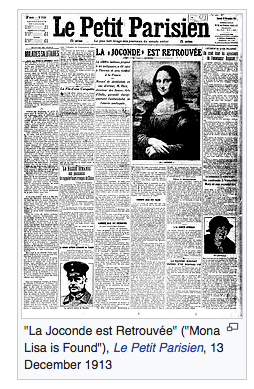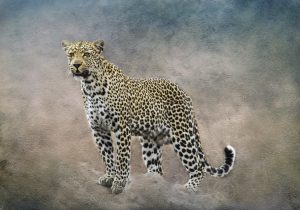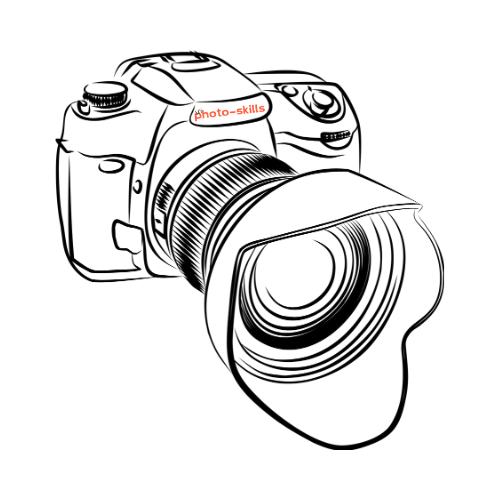I want to debate why photography is considered an art – or not as the case may be.
It’s a question that comes up often in discussions about photography – usually raised by non-photographers.
I have my own views on this, as I am sure you do, and I hope to persuade you to at least consider all the different points of view with an open mind.
After all art is subjective and therefore will always attract robust debate.
In the end I want you to be able to accept that your photographs should be taken to please you first and foremost – that is an art within itself.
Contents
The Definition of Art .... how it has changed over time
A quick search on the Internet comes up with a couple of definitions of art which I would like to discuss.
The first one I want to talk about is The Oxford Dictionaries Definition.
An interesting definition that places art squarely in the lap of ‘human creativity’ usually in the visual form. Reference is made to paintings, drawings and sculptors.

I think this is the more traditional definition of art and the one that people use to argue against photography being an art. Let’s be honest here the great artists of the Renaissance age and the early sculptors had truly amazing skills. I am always fascinated by all the work one sees in art galleries, in public domains and well … just everywhere. I certainly couldn’t even begin to imagine doing something like that!
From Renaissance days we have merged into the modern era where we have had such famous artists as Picasso, as just one example and whose art you either love or hate. Picasso was not known for rendering perfect examples of what he saw in front of him – he chose instead to paint how he interpreted what was in front of him. Not everyone’s cup of tea but his works sell for large fortunes. Love him or hate him he certainly has an original and unique style.
The second definition is Wikipedia’s definition.
This seems to be a more updated version of art more befitting in today’s modern world and includes dance, auditory (one cannot argue that songwriters and singers are not artists), penmanship (authors – I just thought I would drop in a big word here), architecture and a whole range of other forms of entertainment and that we appreciate these days.
So why not photography?
With the birth of the Internet came a boom in photography. With hundreds of websites dedicated to social media, online stock photo site, business and personal websites the world is awash with images taken with cameras.
Why Photography is Art ... IMO
Photography is most certainly art and I will explain here why I believe this to be the case.
First off it complies with both the definitions given above. That is to say it comes about through human creativity, the ability to see and capture something using a skill to produce an image that it is pleasing (or sometimes not) to our visual senses.
OK I get that we don’t use a paint brush and paint to produce an image and I understand where those who think this way are coming from.
But here’s a thought – painters and drawers use tools available to them, as do sculptors.
The camera is merely a tool and if you don’t know how to use it you will take mediocre photos at best.
And then to add more tols to our studio we have post processing software such as LightRoom and PhotoShop – just as in the old fim days we had dark rooms.
These are all just tools to help us create the image we want.
Have you ever noticed how some photographer’s works stand out against others?



Ever wondered why?
Because, like the great artists before them, they have an eye for an interesting subject, understand lighting and composition and know the best circumstances under which to take that image to portray their version of what is in front of them.
The great portrait artist’s works are often used as examples of perfect lighting. ‘Rembrandt lighting’ is still one of the most sought after lighting techniques used in portrait photography and to achieve it takes a certain amount of skill – quite a lot actually.
The difference between Rembrandt (or any painter) and me (or any photographer) is I have a split-second in which to capture a photo, the painter can take years or longer. If I miss that opportunity it is gone whereas the painter can come back the next day, month or year – as the mood takes him. In many cases they painted over their mistakes. Today we ‘paint over’ our photographic dislikes in post processing and while it is much quicker. It is still a skill that takes mastering.
Those who argue that photography is not art as soon as it is taken into PhotoShop and processed need to consider why we process images.
The processing can be the removal of clutter, changing the light, adding or removing elements.
“By changing the photo you have changed what was in front of the camera and therefore it is no longer real!” they argue.
My response to that is “Who said it has to be real?”
If I (the photographer) feel that I want to take out a bit of clutter (for example the trees and bush behind the leopard) well why not?
It is my photo after all!
I’ll bet you a Nikkor 24-70 f2.8 lens that Leonardo Da Vinci didn’t paint The Mona Lisa outdoors, as the background indicates, and I’ll bet he also chose not to show any blemishes on her skin. Exactly as we do today with our beauty portraits.
Does that make Leornado Da Vinci a fraud?
If so is the Mona Lisa worthless because of it or worth more because of it’s change in status?
You decide but remember you read it here for the first time. (wink)
(Oh and as an aside did you see that it was insured for $100,000,000 in 2007? Holy smokes!)
The photo I use for the header of this site has been improved in PhotoShop. In the original photo as in ‘straight out of camera’ the anthill had more light on it below the leopard’s face, there were a few distracting bits of grass and foliage – all of which detracted from the main subject which is the leopard’s face.
It’s my little ‘Mona Lisa smile’ enhanced to what I wanted to portray.
Still Not Convinced Photography is Art?
Man you’re hard to convince.
OK let’s go shopping for some art – remember there is expensive art and there is not so expensive art, just like every other product out there.
Walk into any stationery shop, bookstore, go online and search for images and in all cases you will be overwhelmed with the selection of art available in the form of photographs.
Many of these pieces of art are digitally manipulated photos or composites created with an end in mind. The photo of the lady and the dog above is one such piece where I combined a photo of the family pet with my client. There was no photo of the two of them together prior to the dog dying. This piece of photographic art is priceless in this lady’s eyes.
After our shopping let’s visit a few local galleries – these can be big or small but virtually everyone will have photos for sale as art.
And here’s something to consider – you too can sell your photos through online stock sites. There are thousands of photographers who contribute to these sites. Some of them are hobbyist while others do it as a full time profession.
Let’s end this post with a chapter of you selling your photos as art. I think it is appropriate
Turn YOUR Photos into Art
Before you can make a success of selling your photos as art you need to turn them into works of art.
To improve your chances of selling your photos you need to make them stand out from the rest – learn how to create art from photos.
What that means is making them better than Tom, Dick or Harry’s pretty standard photos. People who buy photos as art, whether that be for wall-art for their home or business, website or other will only buy photos that appeal to them.
That means you need to have better photos than other people who have the same idea as you and are trying to sell their images to the same crowd.
What type of photos are considered art and sell for a good price?
Well anything really as long as it appeals to the buyer’s taste:
- Fine art nudes
- Fine art portraits
- Fine art landscapes
- Fine art pet photography
- Black and white photography – it’s timeless
- Architecture
- Wild life
- Equine photography (weird name for horses)
- Sporting events
- Newsworthy (paparazzi)
- Floral photos – a huge market
- and many more genres
Notice I refer to ‘Fine art’ above – fine art to me refers to the finish of a photo. This includes the subject, the lighting and presentation of the finished piece of art. The type of paper used for printing photos has a major impact on the end product as does the frame, glass and any other finishing touches.
All of these elements combine to turn a photograph from a snapshot into a work of art.
“We all know that Art is not truth. Art is a lie that makes us realize truth, at least the truth that is given us to understand. The artist must know the manner whereby to convince others of the truthfulness of his lies.”
~Pablo Picasso
Convinced yet That Photography Is Art?
I hope so.
It would be fantastic if this post has motivated you to take photos that please you – I really don’t think Picasso cared who liked his art. He did it for himself in the full knowledge that not everyone would appreciate them.
Life, photography and art is like that.
And if you do decide to market your art do let us know how it’s all going in the comments below. I’m sure all my readers would love to hear from you.
Until next time …

Great Blog I Have A Book On Photography I am Still New To The Subject. However, Great Content.
Hi Raymond. Gosh that was a quick comment. I had barely posted and you were here. Love that -thanks.
I don’t know if you should get started in photography it can consume one. 🙂
Thanks for your comment my friend.
Lawrence